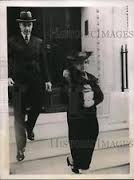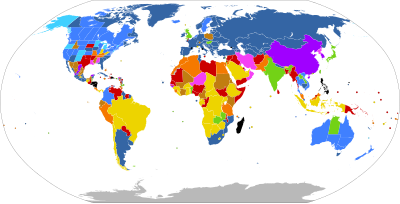Abortion-rights movements
Abortion-rights movements, also self-styled as pro-choice movements, advocate for the right to have legal access to induced abortion services including elective abortion. They seek to represent and support women who wish to terminate their pregnancy without fear of legal or social backlash. These movements are in direct opposition to anti-abortion movements.
The issue of induced abortion remains divisive in public life, with recurring arguments to liberalize or to restrict access to legal abortion services. Some abortion-rights supporters are divided as to the types of abortion services that should be available under different circumstances, including periods in the pregnancy such as late term abortions, in which access may or may not be restricted.
Many of the terms used in the debate are political framing terms used to validate one's own stance while invalidating the opposition's. For example, the labels pro-choice and pro-life imply endorsement of widely held values such as liberty and freedom, while suggesting that the opposition must be "anti-choice" or "anti-life".[1]
These views do not always fall along a binary; in one Public Religion Research Institute poll, they noted that the vagueness of the terms led to seven in ten Americans describing themselves as "pro-choice", while almost two-thirds described themselves as "pro-life".[2] It was found that, in polling, respondents would label themselves differently when given specific details about the circumstances around an abortion including factors such as rape, incest, viability of the fetus, and survivability of the mother.[3]
Abortion practices date back to 1550 BCE, based on the findings of practices recorded on documents. Abortion has been an active practice since Egyptian medicine. Centuries later, abortion was a topic taken up by feminism.[5]According to historian James C. Mohr, there was an earlier acceptance of abortion, and opposition to abortion, including anti-abortion laws, only came into being in the 19th century.[6][7] It was not always a crime and was generally not illegal until quickening, which occurred between the fourth and sixth month of pregnancy.[8] In the 19th century, the medical profession was generally opposed to abortion, which Mohr argues it arose due to competition between men with medical degrees and women without one, such as Madame Drunette. The practice of abortion was one of the first medical specialities, and was practiced by unlicensed people; well-off people had abortions and paid well. The press played a key role in rallying support for anti-abortion laws.[7]
The ideas of the legalization of abortion in the late 19th century were often opposed by feminists, seeing it as a means of relieving men of responsibility.[9][10] In The Revolution,[11] which was an official published newspaper of women's rights that went out weekly, operated by Elizabeth Cady Stanton and Susan B. Anthony, an anonymous contributor signing "A" wrote in 1869 about the subject,[12] arguing that instead of merely attempting to pass a law against abortion, the root cause must also be addressed. The Revolution newspaper highly impacted the women's rights movement, and for the first time, it seemed like women's voices were being heard through the proclamations of these unacknowledged subjects regarding women and their everyday rights and safety as citizens.[13] The writer wrote that simply passing an anti-abortion law would "be only mowing off the top of the noxious weed, while the root remains. ... No matter what the motive, love of ease, or a desire to save from suffering the unborn innocent, the woman is awfully guilty who commits the deed. It will burden her conscience in life, it will burden her soul in death; But oh! thrice guilty is he who drove her to the desperation which impelled her to the crime."[10][14]



| Legal on request: | |
| No gestational limit | |
| Gestational limit after the first 17 weeks | |
| Gestational limit in the first 17 weeks | |
| Unclear gestational limit | |
| Legally restricted to cases of: | |
| Risk to woman's life, to her health*, rape*, fetal impairment*, or socioeconomic factors | |
| Risk to woman's life, to her health*, rape, or fetal impairment | |
| Risk to woman's life, to her health*, or fetal impairment | |
| Risk to woman's life*, to her health*, or rape | |
| Risk to woman's life or to her health | |
| Risk to woman's life | |
| Illegal with no exceptions | |
| No information | |
| * Does not apply to some countries or territories in that category | |

